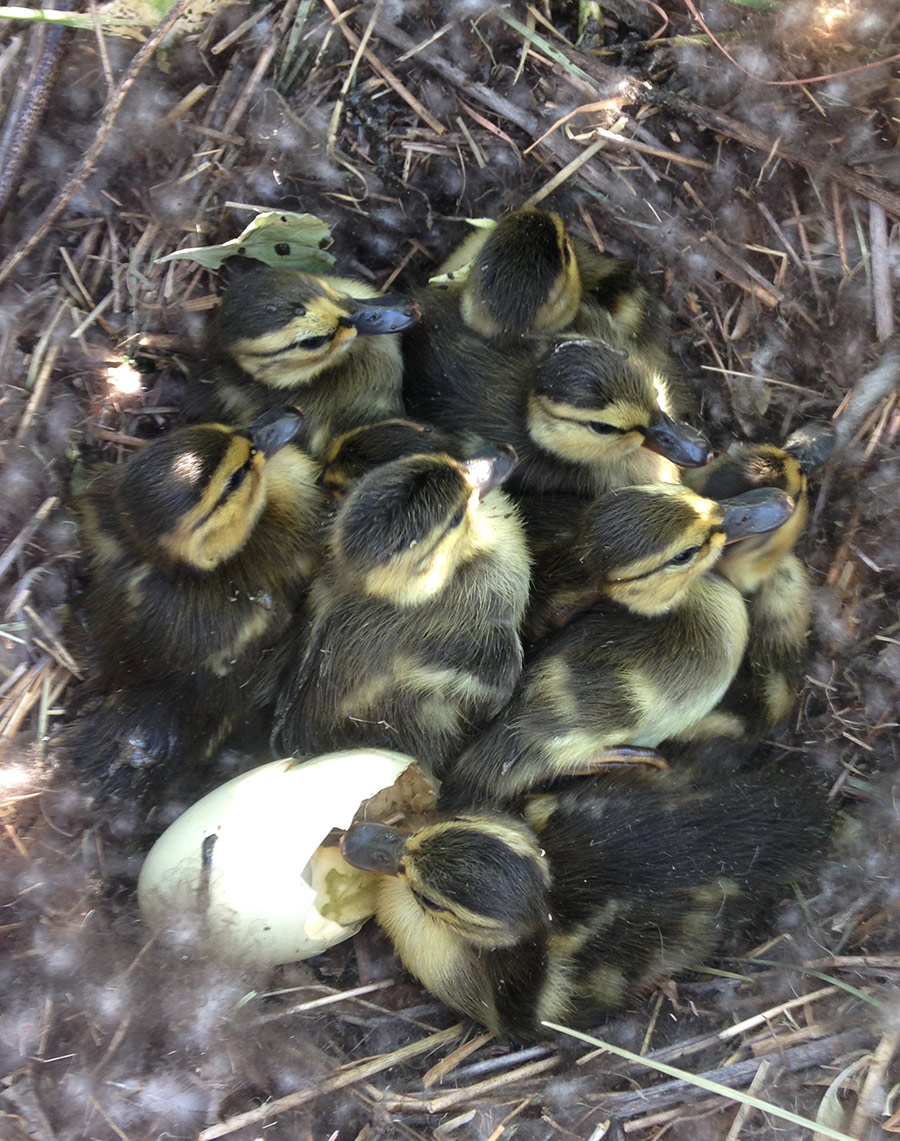The day starts out by waking up to the sound of geese flying back to marsh after spending the night feeding in nearby rice fields. A day in the life of a waterfowl biologist is never dull; work is almost purely dictated by the birds themselves. There are two main seasons in California’s Sacramento Valley: the breeding season and the wintering season.
The waterfowl present during breeding season consist almost exclusively of Mallard, Gadwall, a handful of Cinnamon Teal, and a few other stragglers that didn’t feel like flying all the way up to Alaska. Typically, during this season, we are looking at nest habitat and nesting success rates. Come to find out, ducks don’t actually nest in marshes but prefer, in most cases, dry, tall, dense vegetation. Some ducks even have the audacity to nest in waist-high thistle, which makes my job particularly unpleasant. The goal is to locate as many of these duck nests as possible, take a GPS coordinate, and collect morphometric data.
Candling is a technique used to peer inside an egg by placing a tube (about the size and length of a toilet paper roll) up to the surface of the egg.
Each nest is initially found by combing vast upland fields with a length of rope held between two people. The rope flushes the mother duck (gets her to fly out of the grass) and we carefully locate the nest based on where the hen took off. Depending on how far along the nest is, there can be anywhere from 1 to 14 eggs present. At every nest, each egg is measured and candled. Candling is a technique used to peer inside an egg by placing a tube (about the size and length of a toilet paper roll) up to the surface of the egg. Based on the stage of development seen, we can determine, to the day, how old the egg is. It is our job to continue monitoring each nest weekly. In the subsequent weeks we walk slowly up to the nests and look for each hen. The drab colored hen camouflages the eggs perfectly while sitting and holds tight to the nest for as long as possible before flushing. Sometimes this is the recipe to scare the crap out of the biologist. Their camouflage works so well sometimes that we don’t think the hen is even present until she explodes off the nest in a fit of indignant quacks. Once we get our heart rates under control we apologize to the mama duck by covering her eggs. This keeps them warm and protects them from too much sun exposure. The mother returns promptly to the nest once the “danger” has cleared to tend to her nest.

In the end, all of the waist-high thistle wading becomes worth it when one fateful day we come up to the nest and instead of eggs the nest bowl is full of the world’s cutest little fuzz nuggets (more traditionally referred to as ducklings). There is much rejoicing followed by an intense desire to pick them up and bring them home with you. You quickly realize that 1. You are not a mama duck and 2. That is illegal.
The winter season is when the skies come alive and the marshes fill up with ducks and geese of all colors. The Sacramento Valley of California is one of the prime wintering grounds for almost all species of waterfowl found in the United States. It is during this time that we waterfowl biologists can get the most accurate readings on the population counts of each species. It is incredibly important to keep an eye on these population numbers to make sure one species or another isn’t in trouble. The easiest method is to go out and do count surveys. Get paid to go birding? Hell yiss.
However, the most exciting method is a trap and band operation called rocket netting. Rocket netting is simply attaching three rockets to the ends of a large net and launching the net over a large flock of birds. Now, remember when I said the life a waterfowl biologist is never dull? Well, I lied a little bit. Waiting for the perfect time to shoot the net over a flock of ducks can be excruciatingly long and boring. Like hours. But it’s done for the sake of keeping all our winged friends safe. After we shoot the net, there is a mad dash to extract all ducks where they are promptly weighed, measured, banded, and released.
The day closes with the sun setting behind the mountains and geese filling the sky. They return to a nearby rice field to feed by the light of the moon. The sleepy biologist closes her eyes.

